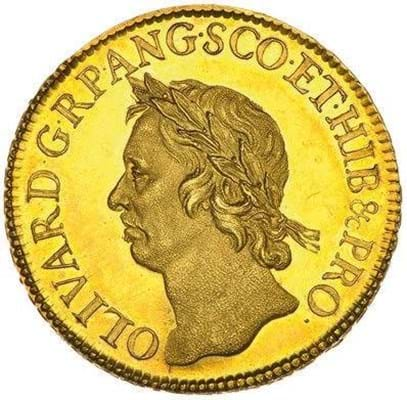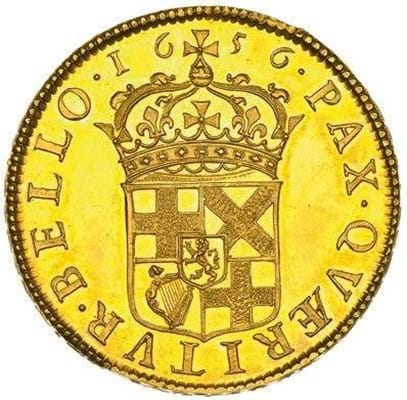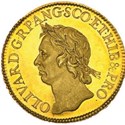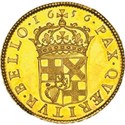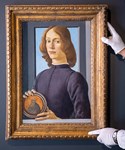The collection offered by Dix Noonan Webb on January 21 had been amassed by Marvin Lessen, an American working in aerospace and defence who began to collect British coins after moving to Scarborough in 1962.
Leading the sale at £380,000 – a record for a Cromwellian coin – was a gold pattern broad or 50 shilling piece. The design showing
Cromwell as Lord Protector is by the noted medallist, die and seal engraver and gem engraver Thomas Simon (c. 1618 to 1623-65). The Latin legend on the obverse translates as Oliver, by the grace of God, Protector of the Republic of England, Scotland and Ireland and on the reverse Peace is sought by war.
The 50 shilling piece (two and a half times the weight of the better-known 20 shilling coin) ranks among the first milled coins.
They were struck on the new machinery demonstrated by the French moneyer and engineer Pierre Blondeau (d.1692) in competitions held with the hammered coins of the Corporation of Moneyers in 1651 and 1656. Blondeau’s ingenious ‘castaing’ device allowed for lettered edging (an important defence against clipping) but such was the risk of sabotage, he chose to work in Drury House on the Strand rather than alongside the moneyers in the Tower.
The patterns, though dated 1656, were actually struck in 1657 using £2000 of gold and silver from a captured Spanish treasure ship.
Only 12 specimens are now known with most in institutions. This ‘better than extremely fine’ example had last been on the market in 1970 when purchased by Lessen at the Virgil Brand sale at Glendining.
At DNW it had been expected to fetch £100,000- 150,000 but was bought by an American buyer after interest from the Far East and the UK for a sum of £471,200 including 24% buyer’s premium.
After Cromwell’s death in September 1658 the Commonwealth reverted to hammered coinage while the return of Charles II in May 1660 put Simon’s position at the Mint in jeopardy.
When the king chose rivals John and Joseph Roettier to prepare new dies, Simon produced his masterpiece, a crown of Charles II with a tiny 200-letter plea to the king engraved on the edge – the famous Petition Crown.


